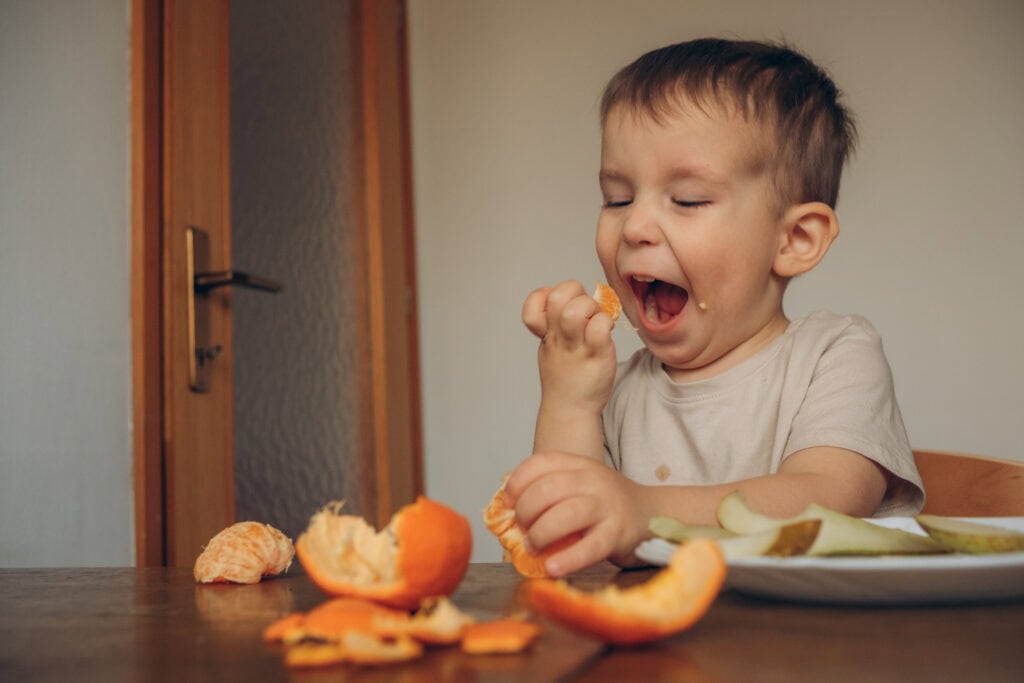How to establish healthy eating habits for kids

Developing healthy eating habits for kids begins with nutrition habits we build from an early age. The way we approach food at home shapes their attitudes towards eating. Encouraging curiosity, involvement, and enjoyment of healthy food helps them develop a positive relationship with what they eat. In this blog, we’ll explore how to establish healthy eating habits that fuel kids’ growth and development.
What can parents and caregivers do to help kids get off to the right start?
From a young age, get kids involved in simple decision making around food. This will help them to be interested and excited about healthy foods, and can help encourage acceptance of new foods. Involving kids can include helping to choose vegetables and fruit at the supermarket, growing or planting herbs to add to your meals, or helping you cook in the kitchen.
Remember, a healthy diet can look a little bit different depending on your cultural background or family situation, so consider what simple decisions you can give to kids that will work for you.
Encouraging kids to explore and enjoy food
Our tastebuds develop from a very young age. Once a baby starts solids, repeated exposure to food flavours and variety helps food acceptance as they grow. It’s important to not mask the taste of vegetables among sweet things like fruit. Allow them to taste vegetables as they are, so that their plate is full of different textures and variety.
For toddlers and older kids, engage their senses with vegetables – what they look like, smell like and feel like. Encourage young kids to play with vegetables without the pressure to taste them. For example:
- Squeeze a cooked carrot into mush
- Use broccoli heads or sliced potatoes to paint a picture
- Rub herbs between their fingers and smell them
- Ask them to add chopped veggies by hand into a recipe.
These small actions help shape healthy eating habits for kids, making nutritious food more familiar and fun.

Creating a positive mealtime environment
Setting up a positive food environment at home makes a big difference in how kids view food. A welcoming and calm mealtime atmosphere encourages kids to embrace new and nutritious foods. Here are some ways to achieve that:
Eating meals together as a family without distractions
Sharing meals is one of the simplest and most powerful ways to bond as a family. It also helps kids build a positive relationship with food. To make the most of mealtimes try to:
- Keep toys and distractions away from the table
- Switch off screens and put phones aside
- Encourage conversation and enjoy each other’s company
- Enjoy the healthy foods you have on your plate.
Doing these things together helps to show you enjoy (and not simply endure) healthy foods. Kids will be more open to try and eat healthier foods if their role models do too.
Encouraging kids to help with meal prep
Getting kids involved with preparing meals gives them a sense of responsibility and teaches them valuable cooking skills. Here are some ideas for small tasks:
- Washing vegetables
- Stirring and mixing
- Setting the table
Serving meals as “family style”
Serve food in large bowls or platters placed in the middle of the table, allowing everyone to serve themselves. This approach encourages kids to control what they are putting on their plate and helps them learn how to respond to their own appetite (feeling hungry or full).
Making healthy choices easy
Making nutritious foods easily accessible is one of the best ways to encourage kids to make healthier choices throughout the day. Here are some simple strategies to help older, more independent kids choose healthier options:
Keep a bowl of fruit on the kitchen counter or table:
Place a variety of fruit like apples, bananas, or grapes in a bowl on the counter, making it visible and easy for kids to grab when they’re hungry. Having fresh fruit readily available encourages spontaneous snacking that is nutritious and satisfying.
Have chopped veggies with hummus in an easy-to-reach spot in the fridge:
When kids are hungry between meals, they’re often more likely to grab whatever is easiest to access. Pre-cut veggies like carrots, cucumber, or celery and store them in an easily accessible container in the fridge. Pair these with a small container of hummus or another dip for extra flavour.
Store dried fruit and nuts in a container in the pantry:
Nuts and dried fruit are excellent snack options, offering protein and healthy fats. Portion out small servings and store them in containers on the pantry shelf, so kids can easily grab a healthy snack when needed.

Understanding where food comes from
Kids may also be more inclined to eat healthier when they understand where their food comes from. Involving them in growing food or exploring local food sources can help foster a deeper connection to the food they eat. Try these activities to inspire your kids:
- Grow herbs at home
- Plant a veggie patch
- Visit local farms or farmers markets
Healthy eating isn’t just about what’s on the plate, it’s about enjoying everyday foods as a part of daily and family life. By involving kids in food choices, creating a positive mealtime environment, and leading by example, you can help set them up with lifelong healthy eating habits. Remember, it’s not about perfection but progress, every small step counts!
Acknowledgement:
Content developed by Health and Wellbeing Queensland’s team of expert nutritionists and dietitians.


